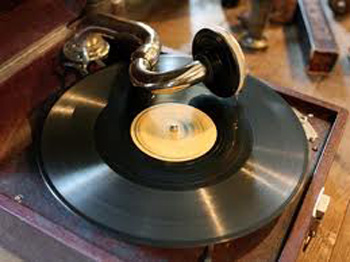Home page
» MUSIC
» Samples of sound recording of Azerbaijan
Samples of sound recording of Azerbaijan Sound recording of Azerbaijan In the history of East singer Jabbar Garyaghdioglu was the first man recording his sound on the gramophone and first accompanier was famous tar performer Gurban Pirmov. Sound recording samples In 1913, along with the growth in the number of joint-stock companies dealing with making gramophone, their activities also began to grow. Soon the Baku branches of British Gramophone and the French Pate firms opened in Baku. Even in logo of “Sport Record’ company having ranked first in the recording of Azerbaijani music culture on records and its distribution there were images of tar, kamancha and daf. In 1916, the Kiev branch of Ekstrafon company, although recorded the first opera of Azerbaijan U.Hajibeyov’s Leyli and Majnun on gramophone, but those recording did not reached our time. The expeditions were organized in Ganja- Shamkir and Sheki - Zagatala regions in 1932-1939 and in regions of settlement of Azerbaijanis in Armenia and Georgia (Dilijan, Basarkechar, Borchali, Sandar). In these years, Noginsk factory had recorded performances of ashugs Ashiq Mirza (Bayramov), Ashiq Assad (Rzayev), Ashiq Islam (Yusifov), Ashiq Gara k (Movlayev) and Ashiq Teymur (Huseynov). Arias from opera of U.Hajibeyov Koroglu, M.Magomayev’s Nargiz and R.Glier’s Shakhsenem were reflected in records produced in the 1940-s. The establishment of the State Archive of Sound Records of Azerbaijan coincides in 1968. The archive had a significant role in collection and preserving in the archive of fiction phono-and video materials, as well as sound and video records reflecting the country\'s socio-political, historical, scientific and cultural life. The place of preservation of our sound heritage - State Archive of Sound Records of Azerbaijan is the 2nd such entity in the CIS after Russia dealing in this activity. The valuable materials on well-known personalities, as well as the well-known singers, folk singers are preserved in the archives. In addition, the archive deals with restoration of old recordings of sound. The hundreds of works of masters of the classical Azerbaijan mugham of the years 1900-1914 are recorded in the various studios around the world. At present, the archives stores 70 thousand phono documents, more than 4 video recordings. The State Sound Records Archive currently collaborates with the Royal British Library’s Research center. So far, up to 50 ashug sagas in digital recording were sent to that library.
|
